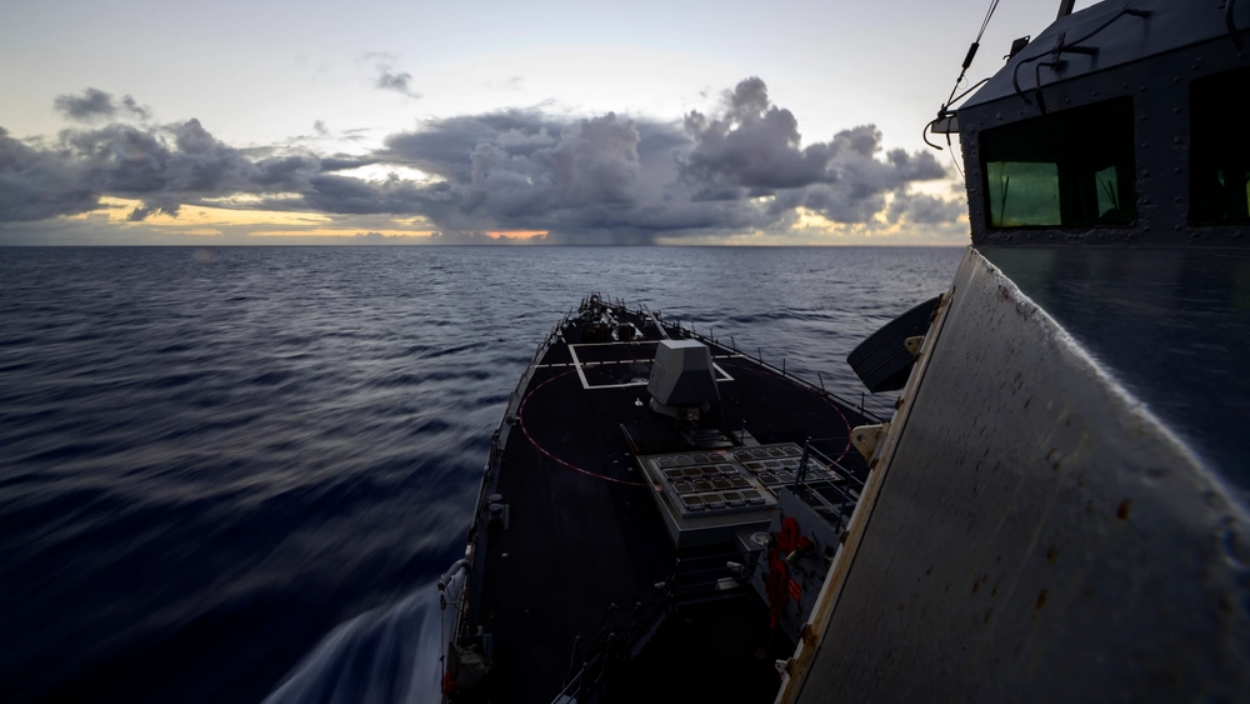

A Chinese warship came dangerously close to hitting an American destroyer earlier today in the Taiwan Strait.
The incident happened when the Chinese ship claimed the USS Chung-Hoon, an Arleigh-Burke-class destroyer, and the Canadian frigate HMCS Montreal were sailing into Chinese waters (the Canadian Navy disputes this).
The destroyer was in the Taiwan Strait along with the HMCS Montreal, after sailing through the South China Sea for the previous week. Reporters with Global News, a Canadian newspaper, captured footage of the incident. According to Global News, the Chinese ship approached the two other vessels and began to speed up. HMCS Montreal Capt. Paul Mountford said that the People’s Liberation Navy ship radioed the USS Chung-Hoon, saying to move to avoid a collision. The American ship called on the Chinese one to move, but the USS Chung-Hoon ultimately changed its course, avoiding the other vessel by only 150 yards.
“The fact this was announced over the radio prior to doing it clearly indicated it was intentional,” Mountfourd told the paper, adding that the move was “not professional.”
Global News also reported that Chinese ships have followed the two western vessels during the past week. Chinese ships did not attempt to sail close to the Canadian frigate.
The U.S. Navy’s 7th Fleet, which the USS Chung-Hoon falls under, has not commented yet on the incident.
Subscribe to Task & Purpose Today. Get the latest military news and culture in your inbox daily.
Today, Secretary of Defense Lloyd Austin spoke at the Shangri-La Dialogue in Singapore, saying that the United States would not allow “coercion and bullying” in the region, specifically in regard to Taiwan, which China claims as part of its territory. The annual summit is focused on diplomacy and defense, with officials from across the Pacific region.
The incident in the Taiwan Strait comes a week after a Chinese fighter jet buzzed a U.S. Air Force RC-135 surveillance plane in international skies. The aerial near-miss happened on May 26, although the Air Force only announced it on Monday, May 29.
The U.S. and China have slowly begun reengaging at higher levels, following cancellations and tensions from a Chinese spy balloon that flew over the continental United States earlier this year. Secretary of State Anthony Blinken is expected to visit China this year.
Austin has stressed the need for communication between the two militaries, saying that it is essential to avoid incidents or “miscalculations” spiraling into greater conflict. He and his Chinese counterpart Li Shangfu shook hands at the Shangri-La Dialogue, after China rejected a proposal for a sit-down meeting. The two defense ministers were not expected to interact in Singapore. Austin had criticized China for turning down the offer to meet.
“To be clear, we do not seek conflict or confrontation,” Austin said today at the conference. “But we will not flinch in the face of bullying or coercion.”
The latest on Task & Purpose
- Navy destroyer USS John Finn’s commanding officer fired
- Navy destroyer USS John Finn’s executive officer fired along with ship’s captain
- The long journey home for a Marine veteran killed in Ukraine
- A Norwegian airline is banking on USS Gerald R Ford sailors having lots of unprotected sex
- Stolen valor and ‘homeless veterans’: Inside a failed hoax
